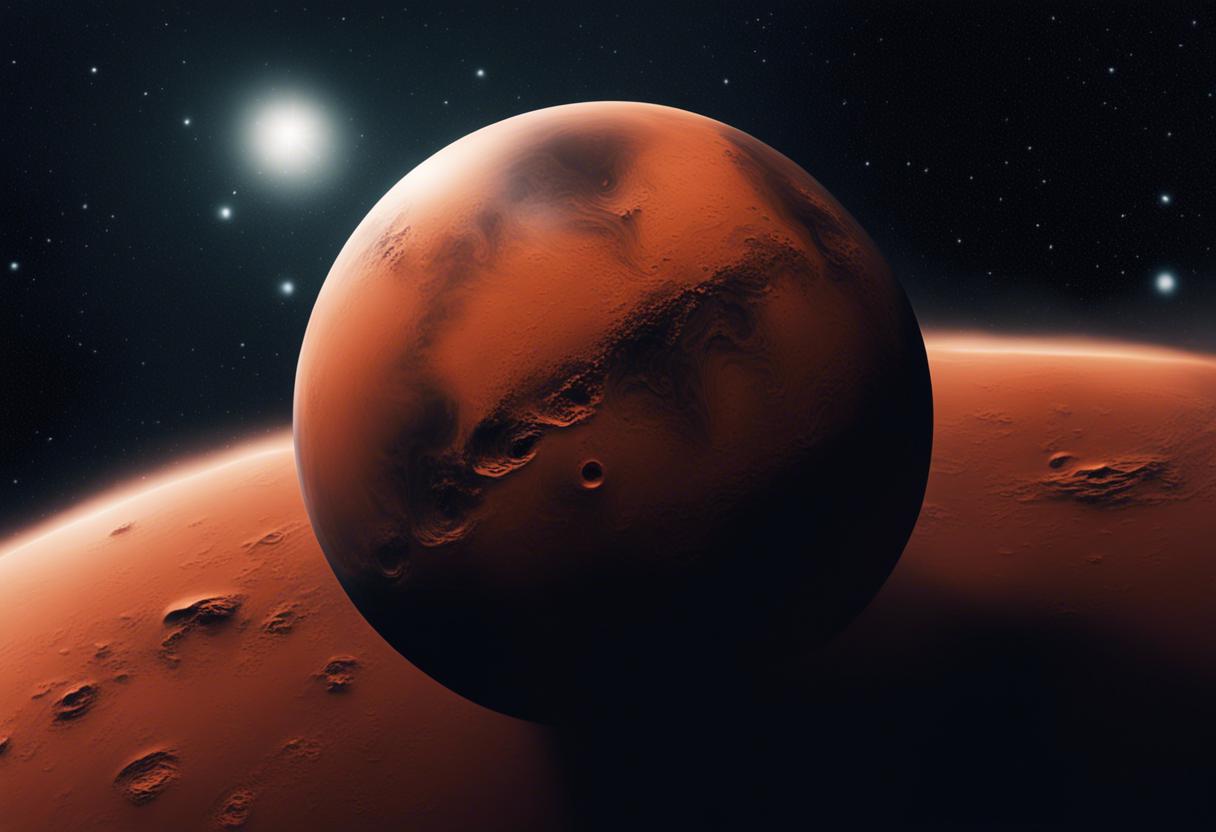Scientific evidence suggests that a significant body of liquid water might be lurking beneath the surface of Mars, concealed within fractured igneous rocks. The volume of this water is enough to fill an ocean that would engulf the entirety of our neighbouring planet. This revelation was made possible by the analysis of seismic data gathered by NASA’s InSight lander, leading to new understandings about the inner composition of Mars. Scientists speculate that the water, found between 11.5km and 20km beneath the Martian surface, might harbor conditions suitable for sustaining microbial life, either historically or currently.
Vashan Wright, the chief author of the study and a planetary scientist at the University of California’s Scripps Institution of Oceanography, explained, “The crust at such depths is adequately warm to keep water in liquid form. If it was closer to the surface, the water would form ice.” The findings of this study were published in the Proceedings of the National Academy of Sciences journal on Monday.
Michael Manga, a co-author of the study who is also a planetary scientist at the University of California, Berkeley, added that Earth is home to microbial life in deep underground locations where water saturates rocks and energy sources are present.
In 2018, the InSight lander was dispatched to explore the deep interior of Mars. It was tasked with collecting data on the different layers of the planet, extending from its liquid metal core, through its mantle, up to its crust. The mission ended in 2022.
Elaborating further on the information gathered, Mr. Wright said, “InSight could calculate the speed of seismic waves and their variations with depth. The velocity depends on the rock’s composition, the existence of fractures and the substances occupying these fractures. We amalgamated this with gravity measurements and rock physics models. These models are similar to those utilised to examine the properties of Earth’s aquifers or for mapping underground oil and gas resources.”
The collected data points towards the presence of a liquid water reservoir embedded within the Martian crust, the outermost layer of the planet. This water is contained within fractured igneous rocks formed from the cooling and solidification of magma or lava.
Mr. Wright suggested that rocks in the mid-crust filled with liquid water best explain both the seismic and gravity data. “The water exists within fractures. If the InSight location is representative and you withdraw all the water from the mid-crust fractures, we estimate that the water might fill a 1-2 km deep ocean on Mars at a global level,” he said.
The surface of Mars, though barren and frigid currently, was once teeming with warmth and moisture. These conditions altered drastically over three billion years ago. According to research, the water that was prevalent on the Martian surface didn’t evaporate into the cosmos, but seeped into the planet’s crust instead.
Mr Manga explains, “In its early stages, Mars hosted rivers, lakes, and perhaps even seas. Moreover, the crust of this planet could have been replete with water at the onset of its existence.” He draws parallels with Earth, where groundwater permeates from the surface to underground. He suggests that Mars probably experienced the same water history during warmer periods.
For future human exploration and potential establishment of long-term settlements on Mars, water will undoubtedly serve as a crucial resource. Currently, Mars has reserves of water in the form of ice, located at its poles and underground. However, the apparent depth of the concealed liquid water could pose difficulties in its extraction.
Mr Manga suggests that drilling to such magnificent depths could be quite complicated. Instead, we could look for regions where geological activities dispel this water, like the tectonically active Cerberus Fossae located in Mars’ northern hemisphere. These regions might present another route to find deep-seated liquid. However, he also points out that the protection of Mars’ environment must be considered before any such action is taken.
[Source: Reuters. All rights reserved © Thomson Reuters, 2024]

